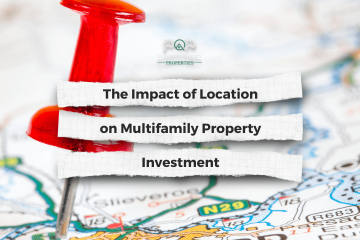When you buy a house, you have fees that come along with the purchase price: closing costs, the realtor fee, and all those nitty gritty extra costs that seem tedious at the time. Well, when it comes to investing your money into a multi-family property, there are fees that are incorporated into a syndication that some may not understand. That is where we come in—today we are going to talk about the most common fees and what it all means to be part of the syndication.
Myths Based Around Syndication Deals
We are going to start with the myths that come with the territory, mainly the two top myths that we hear about the most. The first one is that investors have no control—this is not true. While passive investors don’t get to pick things like paint colors and flooring, or where to place all the garbage and recycling bins on the property, you still have 100% say in what type of asset you invest, the asset class, the capital amount, which deal with which sponsor, whether you choose a value-add deal or not. When you pick a syndication, your choices and control are made up front during the selection and mass amounts of research that is done on the property you are selecting.
Myth number two is that investors earn lower returns. This myth falls into the category of one comparing it to something that is not in the same category, like how one would mistakenly compare a cow to pizza, they aren’t the same thing! Even experienced investors can make the mistake of comparing gross returns to net returns and they just aren’t the same thing. Gross returns are the profits or earnings before any expenses are taken out while net returns are reflective of what you’ll actually take home, it could be very misguiding.
When you are initially picking your syndication, there are three questions that you should consider when looking;
- Are the fees creating alignment between the investment and asset goals of the general and limited partners and driving performance?
- Can you still make a reasonable (projected) return on your capital that propels you toward your goals?
- Are the sponsors being transparent about the fees being charged and what they’re for?
Transparency is key when working with a syndication. You want to know the fees and all of the other important things that go along with them when you are signing on the dotted line to be a passive investor.
The Most Common Fees
There are 8 common fees that are present in almost all syndications. But one needs to understand these fees to be able to pick the right one for them and make sure that they know what they are getting into. Have no fear, we are going to break them down here:
Acquisition Fee — This is typically 1–3% of the purchase price of the asset and covers costs associated with the resources and due diligence performed by the syndicators to acquire the asset.
Sometimes syndicators spend weeks or even months researching and underwriting deal after deal to no avail. The acquisition fee is what keeps the lights on, so to speak, and helps afford all that effort during and between deals.
Asset Management Fee — At about 1–3% of the gross income, this fee pays for the ongoing bookkeeping, coordination, and communication that’s required to properly manage the asset and execution of the business plan.
Construction Management Fee — On value-add or development deals, a construction management fee of about 5–10% of the expected construction budget is necessary for managing the renovations on the property. Attentive, thorough oversight is required to ensure construction projects finish on time and within budget.
Equity Placement Fee — A fee charged upfront by the broker that covers the cost of obtaining investors, limited partners (like you!) and the marketing, coordination, and behind-the-scenes communication and paperwork. Also sometimes called the equity origination fee, this is usually around 1–2% of the capital invested.
Loan Fee - A loan fee is typically 1% of the total loan amount. This fee compensates for the immense effort involved in obtaining financing of substantial amounts.
Guarantor Fee — Occasionally, loans require a key partner to personally pledge assets to guarantee the loan. Typically, between 1–3% of the loan amount compensates the guarantor for their pledge and support.
Refinance Fee — At about 1–2% of the refinanced loan amount, this fee, also called a capital event, compensates key parties for the time and energy it takes to refinance the property. If you’ve ever received a portion of your investment capital back and experienced the joy of cash-on-cash returns as if all your capital was still invested, you’ll probably agree that the refinance fee is well worth it!
Disposition Fee — Finally, a disposition fee is often charged to cover the costs of marketing and selling the asset once the business plan has been executed. 1–2% of the sales price of the asset ensures a smooth transition from your syndication ownership to the next party.
How to be a Fee Aficionado Passive Investor
Understanding these common fees presented in a syndication is going to make you more knowledgeable and help others take you a little more seriously. You do need to take into consideration that every syndication may have different numbers in their fees based on location and values, but the general gist of all of the fees is the same.




